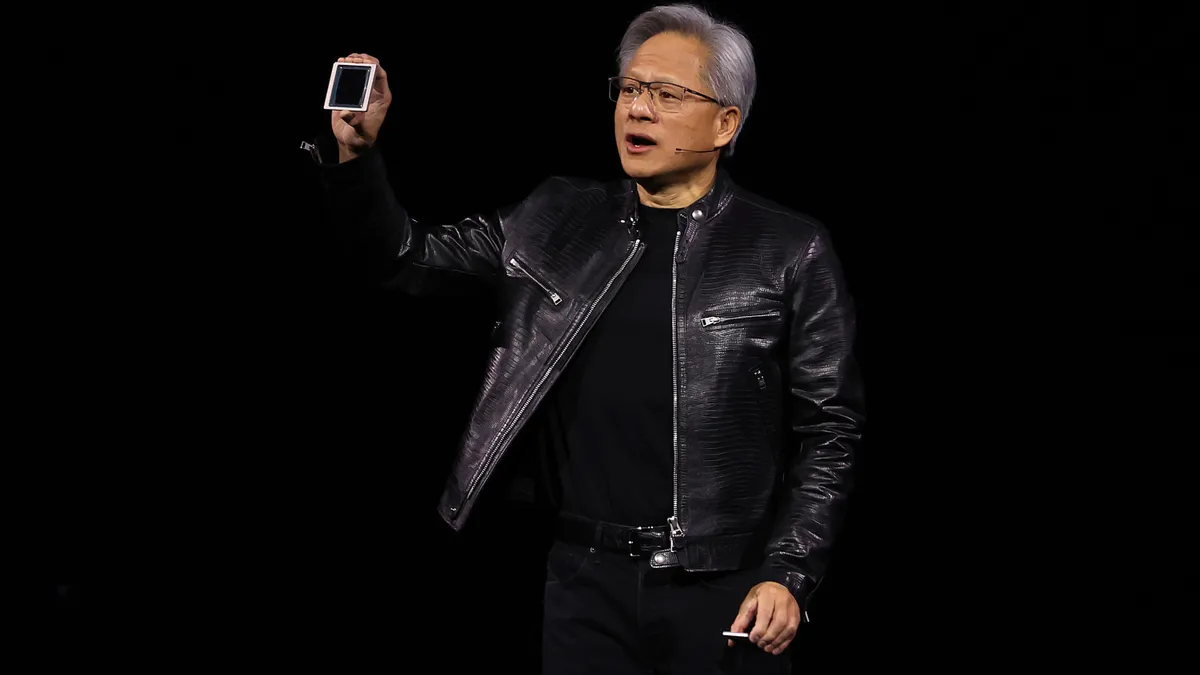Dive Brief:
- Data center investments in AI chips and processors helped drive up worldwide semiconductor revenue 18% year over year to $626 billion in 2024, Gartner said Monday. The analyst firm expects the chip industry to generate over $700 billion in revenue this year.
- Hyperscalers played a major role in the increase as data center spending on semiconductors nearly doubled in 2024, growing to $112 billion from $64.8 billion the prior year, the report found.
- Graphics processing units and AI processors used in data center servers and accelerator cards were “the key driver for the chip sector in 2024,” Gartner VP Analyst George Brocklehurst said in the report. Buildouts tied to AI and generative AI demand made data centers the second-largest market for semiconductors after smartphones, he said.
Dive Insight:
Large language model training and a proliferation of generative AI applications sparked massive infrastructure shifts last year, transforming cloud from the inside out. Big tech poured tens of billions of dollars into data center capacity expansions and broke ground on new facilities optimized for AI.
Nvidia was one of the clear early winners. A hyperscaler race to fire up AI compute helped the GPU giant nearly double quarterly revenues to $35.1 billion in Q3 of FY2025 from $18.1 billion the prior year.
A voracious appetite for data was an additional market driver, according to Gartner. Eleven of the top 25 semiconductor vendors, including third-ranked Nvidia, enjoyed double-digit growth last year, as the market for memory chips grew 72%, capturing one-quarter of all semiconductor sales.
As enterprise customers weigh AI deployment costs, looking to public cloud and on-prem private options, the semiconductor market remains in flux. The release of the relatively lightweight DeepSeek R1 open-source model took a multibillion-dollar bite out of Nvidia’s valuation last week.
“DeepSeek did upend the position for massive AI infrastructure spending,” Gartner VP Analyst Joseph Unsworth said in an email. “But, this innovation will continue to evolve and will take time to play through fully,” he said, pointing to earnings call capital expenditure projections made by Meta and Microsoft in January.
Microsoft expects capital expenditures to be roughly on par with the $22.6 billion reported for the final three months of 2024 over the next two quarters, CFO Amy Hood said. Meta plans capital expenditures to reach $65 billion this year, CFO Susan Li said, speaking during the company’s Q4 2024 earnings call.
Geopolitics are another volatile market variable.
The Trump administration announced Saturday additional tariffs of 25% on imports from Canada and Mexico and 10% on imports from China. In addition to raising prices on components coming from outside of the U.S., a prolonged tariff policy could cause supply chain disruptions, according to a Consumer Technology Association January report.
“Retaliation from our trading partners raises costs, disrupts supply chains, and hurts the competitiveness of U.S. industries,” CTA VP of Trade Ed Brzytwa said in the report.
Impacts on the semiconductor market, compute capacity constraints and enterprise technology plans are hard to predict, according to Gartner.
“The biggest impact to the semiconductor forecast is the potential to negatively impact electronics demand through higher prices and supply chain complication,” Unsworth said. Retaliatory measures and other fallout may also negatively impact demand, he said.













